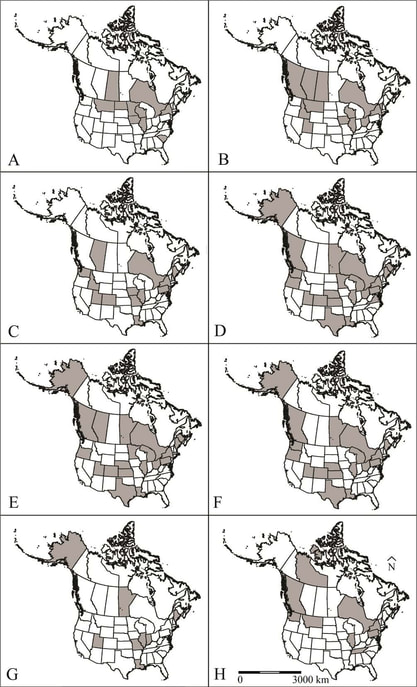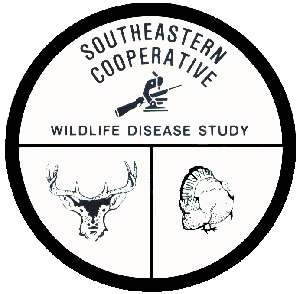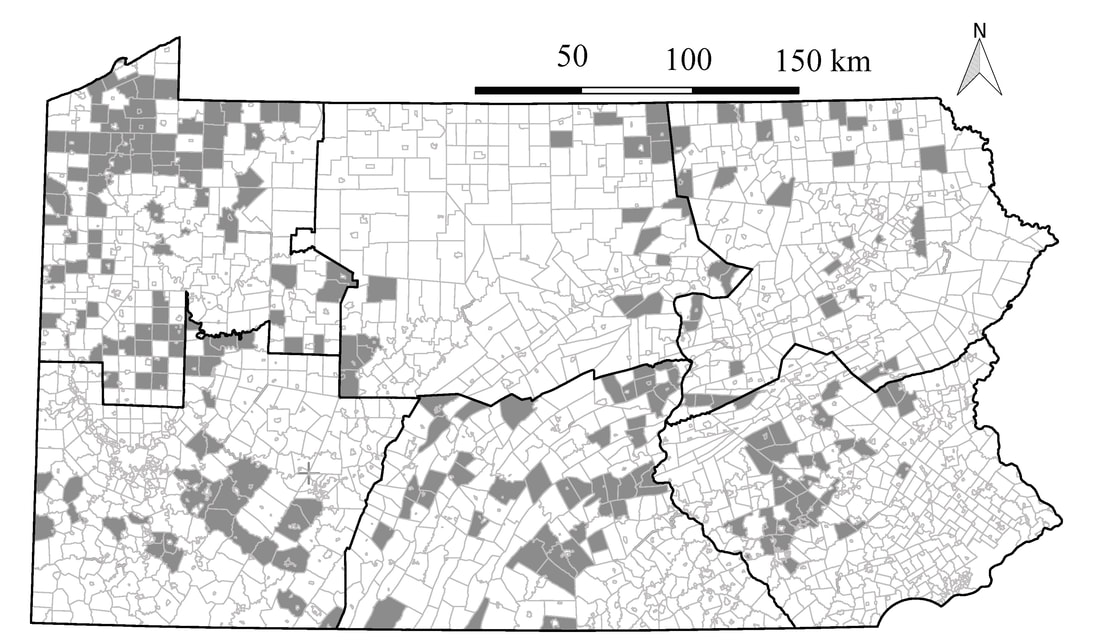Using a multi-faceted design to investigate muskrat health and exposure to pathogens, diseases, and contaminants
As a semi-aquatic species thriving in a variety of habitats, muskrats (Ondatra zibethicus) are potentially exposed to a high diversity of pathogens and contaminants, including those associated with terrestrial and aquatic ecosystems. With evidence of muskrat population declines across the United States, it is important to understand the health of muskrats, both present and past. In this multi-faceted study, we utilize three survey techniques (1. retrospective, 2. passive, 3. active) to define muskrat exposure to pathogens, diseases and contaminants at a local, regional, and national scale.
Our manuscripts have been published, click here!
1. Retrospective Study
|
While there is abundant literature on pathogen and contaminant exposure of North American muskrats , existing data are insufficient to evaluate whether infectious or non-infectious diseases are contributing to the observed declines. The objective of this retrospective study was to review existing peer-reviewed data and technical reports on pathogen (parasites, bacteria, virus, fungi) and contaminant exposure of North American muskrats, with an emphasis on those causing morbidity and mortality.
We found that there are numerous reports of muskrats across North America being exposed to a wide diversity of pathogens, contaminants, and toxins. Some commonly reported diseases were tularemia, Tyzzer's disease, cysticercosis, and biotoxin poisoning from cyanobacteria. In total we reviewed 131 articles spanning 1915-2019.
Although we found an abundance of literature, there are still many gaps in our knowledge on muskrat health. Geographically, reports only covered 29 of the 48 states (excludes Florida and Hawaii), and many reports from Canada cover only a small portion of the country's vast available habitat for muskrat. In respect to topics documented, research on environmental contaminant and biotoxin impacts on muskrat health and survival is warranted.
Figure 1: U.S. states and Canadian provinces that muskrat (Ondatra zibethicus) health surveys have been conducted in North America for (A) viruses, (B) bacteria, (C) protozoan parasites, (D) trematodes, (E) cestodes, (F) nematodes, (G) ectoparasites, and (H) toxins and contaminants. Locations designated by shaded regions.
|
2. Passive SurveillanceIn collaboration with the Southeastern Cooperative Wildlife Disease Study (SCWDS) at the University of Georgia and the Pennsylvania Animal Diagnostics Laboratory Systems, we were able to review muskrat diagnostic cases (muskrats that were submitted for post-mortem examination) from any of these laboratories.
From these diagnostic cases, we were able to compile information on year and location of collection, cause of mortality, and number of muskrat moralities caused by each diagnosis. Only 27 muskrats were submitted for post-mortem examination to the labs mentioned above between 1977 and 2018.
More information to be revealed once our publication is available! Stay tuned!
|
|
3. Active SurveillanceActive surveillance is comprised of "actively" seeking the presence of a target disease, contaminant, or pathogen in a current population. In this portion of the study, we collected muskrat carcasses from local Pennsylvania trappers following the 2018-19 trapping season in collaboration with the Pennsylvania Game Commission (see figure).
Once collected, we conducted necropsies on each muskrat carcass (n=611) and collected various tissues and organs for examination. We also screened intestinal tracts for parasites. We did detect several disease and parasites in our Pennsylvania muskrats, including Tyzzer's disease, a bacterial infection that is known to cause mortality in muskrats.
Additionally, we collected habitat and landscape information from trappers (e.g. water body type, land cover type) that we used in our analyses to determine if these factors had any correlation with parasite burden, disease occurrence, or contaminant concentrations.
Please check back for more information about this study once our paper becomes available.
|



